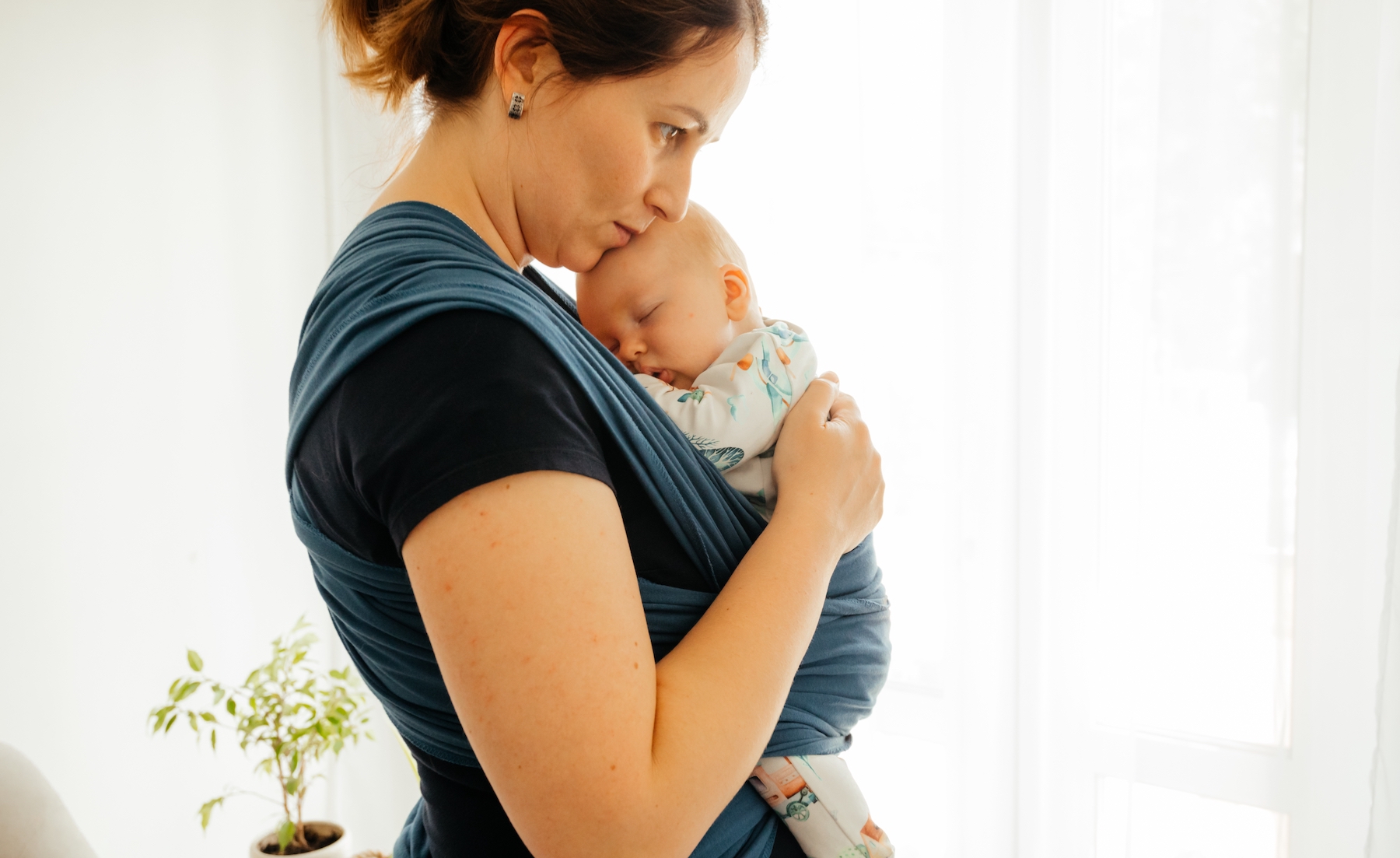Subsidiarity Made Simple: Understanding the Hague Convention’s Subsidiarity Principle
Adoption Advocate No. 127
What is Subsidiarity?
Subsidiarity is one of the most hotly debated and diversely interpreted principles of intercountry adoption.1 But before diving into an explanation of subsidiarity in the intercountry adoption context, it is helpful to understand subsidiarity in a more general and broader way. Subsidiarity is a concept that dates back at least 200 years and, in general terms, means that problems should first be dealt with at a local level. It is in some respects a principle of decentralization with the larger authority taking a subsidiary role and allowing the localized authority to respond to the needs of those closest to it. It is a principle that is commonly evoked in international law settings.
Subsidiarity is somewhat analogous to “States Rights” in the U.S. context and is a fundamental principle in European Union (EU) law where it has existed since at least 1985. In the EU context, subsidiarity means that the Union is only supposed to take action when things cannot be achieved by the Member states or when the Union is in a better position to take action than the individual Member states.2 In short, decisions should be made at the local level whenever possible.
It is against this backdrop that subsidiarity in the intercountry adoption context must be understood. In intercountry adoption, the parallel to the local level in decision-making is the biological family. The biological family has the priority and the right to raise their children. However, the issue with subsidiarity in the intercountry adoption context centers on who should raise a child if the biological family cannot. The hierarchy of options, both domestic and international, for the raising of a child in the event the biological family cannot is thus the central focus of those studying and implementing the subsidiarity principle.
The Hague Convention (Convention of 29 May 1993 on Protection of Children and Co-operation in Respect of Intercountry Adoption)
The subsidiarity principle is a fundamental part of the Hague Convention and has a long and storied history.3 The principle was enshrined in other instruments prior to the Hague Convention, most notably the Convention on the Rights of the Child, but it is really through the Hague Convention that the principle has become a guide for all intercountry adoptions, including at times even those between countries that are not party to the Hague Convention. The principle of subsidiarity is set out in both the Preamble and Article 4(b) of the Hague Convention:4
Preamble
Recognizing that intercountry adoption may offer the advantage of a permanent family to a child for whom a suitable family cannot be found in his or her State of origin…
Article 4(b)
An adoption within the scope of the Convention shall take place only if the competent authorities of the State of origin -…
b) have determined, after possibilities for placement of the child within the State of origin have been given due consideration, that an intercountry adoption is in the child’s best interests;…
This principle, should, in theory, help countries understand the hierarchy of placement for children. In other words, the issue is whether intercountry adoption should be viewed as subsidiary to domestic care options, and if so, which domestic options. However, no principle in the intercountry adoption context has been as hotly debated and contested as the subsidiarity principle. Establishing a correctly informed view of this principle is crucial because it dictates how, why, and perhaps most importantly when intercountry adoptions should take place. Despite relatively clear language in the Convention itself and copious evidence in its drafting history, many scholars, practitioners, and advocates still believe fallacies about subsidiarity that strip the principle of its stated family-centered focus.
All About Family
The subsidiarity principle as enshrined in the Hague Convention is, like the Convention itself, centered around the concept of family. Twice in the preamble the word “family” is included as the subsidiarity principle is set forth. The Convention first recognizes that intercountry adoption has the potential to offer a child a “permanent family” when a “suitable family” may not be available in her home country. Later in the text, the Convention makes clear that another fundamental and overarching principle of the Convention is to recognize the best interests of the child.
The right of a child to a permanent family heavily influenced the formation of the Hague Convention, and remains a very important consideration in the workings of the Permanent Bureau of the Hague Conference. A child’s right to a family shares an interconnected relationship with the best interests principle: A child in a permanent family is likely having his or her best interests met and it is in the best interests of a child to be in a permanent family whenever possible. Thus, the best interests principle is complementary to the subsidiarity principle and both work together to advance the right of children to be cared for in a permanent family. This is true regardless of whether a permanent family solution, such as adoption, occurs domestically or internationally.
As further evidence that the Convention is centered around the concept of permanent families, multiple attempts were made during the Convention’s drafting to introduce other non-permanent solutions as acceptable under the subsidiarity principle. These included attempts to list as suitable options less than permanent solutions, such as foster care and kafala (the caring of a child by a non-biological family without the child having any legal rights or protections as part of the family and with the child retaining his own family name). Every time the drafters of the Convention were presented with opportunities to include these alternatives in the Convention they rejected them. From the first meeting of the drafting committee where the chairman stated that “the Convention is intended to give a family to a child and not a child to a family”5 to the final language that appears in the Convention, the focus of the Convention itself has been on permanent families.
The Misinterpretations
With such a clear drafting history and clear language in the Convention itself—language which departed sharply from previous international instruments such as the Convention on the Rights of the Child—it is surprising to see the evolution of the interpretation of the subsidiarity principle. Almost immediately after the Convention was finalized, advocates began to push for their interpretation of subsidiarity to be applied. As Peter Hayes stated, “having lost on the text of the Convention, the Permanent Bureau [of the Hague Conference] quickly realized that it could yet win on its interpretation.”6
Non-Permanent Options
One of the most pervasive misinterpretations of the subsidiarity principle is to insist that options short of a family are acceptable. Most advocates and child care professionals will readily admit that orphanages are bad and have damaging effects on children.7 Yet, too many are still willing to argue that long-term foster care and other “family-like” environments can provide a child with a situation on par with adoption—this despite consistent evidence dating back decades showing that such solutions, while better than orphanages, still fail to achieve the positive outcomes experienced through adoption.8
Despite attempts during the drafting of the Convention to include non-permanent care options such as foster care or kafala, the subsidiarity principle as enshrined in the text of the Convention is clear that permanent family solutions take precedence over non-permanent solutions. This means that an intercountry adoption is preferable to group homes, family-like environments, or foster care. Family reunification and domestic adoption may trump intercountry adoption if it is in the child’s best interest, but any other domestic option that does not include a child being part of a permanent family and enjoying all of the legal protections that come with being part of a family, cannot be preferred over a permanent family via intercountry adoption.
The Exception
A second way in which opponents of independent and family-centered intercountry adoption tried to influence the interpretation of the Convention was by stating that an exception existed to subsidiarity. This exception was explained as allowing a child to remain in her country of origin in something less than a permanent family, despite a permanent family being available internationally, because the child’s culture and identity could take precedence over family. This view is unquestionably incorrect. The drafters of the Hague Convention reached a “consensus” that an exception to the subsidiarity principle, in certain circumstances, is possible. However, it is not the exception just described.
When there is cause (meaning that it is in the child’s best interests) for an exception to the subsidiarity principle, a child that has an opportunity to be placed in a domestic adoption may in fact be adopted abroad. This is noted as being most likely to happen when the child is a relative of the family abroad or the child has a specific special need and cannot adequately be taken care of in her home country. This correct interpretation of the exception to the Convention is consistent with the drafters’ intent and the wording of the Convention which places permanent families as the central focus of the Convention.
The Fallacy of Exhaustion
Another pervasive misinterpretation of the Convention has come to be known as “exhaustion.” The argument is made that intercountry adoption may be acceptable, but only after every possibility for a child to obtain a permanent placement in her country of origin has been searched for or tried, and failed. This view is unequivocally incorrect. As noted above, there is an exception to subsidiarity that explicitly allows for an intercountry adoption to be preferred over a domestic adoption. Furthermore, the language of the Convention itself makes it abundantly clear when it states that a child may be placed in intercountry adoption “after possibilities” for domestic adoption have been given “due consideration.” The text does not say “after all possibilities” or “after exhaustion of possibilities.”
The practical effect of reading into the Hague Convention the requirement that every possible chance be given for a domestic adoption to occur before considering intercountry adoption would almost certainly violate the best interests principle. After all, a child who is four years old and living in an institution may not be adopted now, but could potentially be adopted domestically in a year, two years, or ten years. However, there is no guarantee that such an adoption would take place. Meanwhile, an intercountry adoption may be available for the child. If exhaustion were required, more and more children would be subject to languishing indefinitely in orphanages because of the “possibility,” however remote, that one day they will be adopted within their country of origin.
For these reasons, the Permanent Bureau’s Guide to Good Practice9 unambiguously states that the Hague Convention “does not require that all possibilities be exhausted.” To require such exhaustion would be “unrealistic” and “may delay indefinitely” the possibility of finding a permanent family for a child. The Guide to Good Practice also clarifies that even a search for relatives should “not unnecessarily prolong the period of institutional care for the child.” Any call for an exhaustion of possibilities in a child’s country of origin is incorrect, ludicrous, and damaging to children.
Reacquiring the Narrative
Now that the correct interpretation of the subsidiarity principle has been explained and defended, the remaining issue is how to influence a change in thinking about this principle. In some ways addressing this problem is relatively straightforward, but that does not mean it is easy. The language of the Hague Convention is family-centered. The drafting history of the Convention unambiguously shows that the subsidiarity principle was always intended to stand for helping children find permanent families regardless of location. However, misinterpretations of the Convention, whether well intentioned or not, have taken hold of the narrative surrounding the subsidiarity principle. The time has come for those who truly believe in the best interests of the child and in a family-centered subsidiarity principle to step forward and reacquire the narrative.
Fortunately, this can be done without a call to abandon the Convention or reformulate it. Indeed, because the language of the Convention is clearly supportive of a family-centered subsidiarity principle, the call to action is one of reframing and not reformulating. Part of this can be done through education, which is what this article aims to do. It is crucial that advocates, adoptive families, and others who interact with those interested or working in intercountry adoption take every opportunity to correctly educate about the subsidiarity principle. This is particularly true in interactions with government officials. Many government officials are seeking to do what is best for the children in their countries. However, they often receive information from sources espousing the misinterpretations and fallacies listed above. It is imperative that a counterbalance make its weight felt by providing these government officials with correct information on and interpretations of the Convention.
Another prong in the approach to reacquire the narrative around subsidiarity centers on writing and publication. Many scholars have already taken the torch in support of a family- centered subsidiarity principle, and additional scholars from all academic areas must continue to strongly argue for a correct interpretation and application of the subsidiarity principle. However, even those who do not hold titles as professors or academics can influence the discussion around the subsidiarity principle through blogs, social media posts, letters, and any other form of communication that informs others about this issue and advocates for a correct interpretation of the subsidiarity principle.
Last, but certainly not least, adoption agencies and adoptive parents can play a large role in reacquiring the narrative around the subsidiarity principle. Adoption agencies and adoptive parents are often the closest to the implementation of the subsidiarity principle. The correct interpretation and implementation of the subsidiarity principle should lead to more children finding permanent homes, including internationally. As adoption agencies and adoptive parents better educate themselves on the subsidiarity principle they will be empowered to educate others—whether government officials, social workers, orphanage workers, prospective adoptive parents, or anyone else connected to intercountry adoption—on the correct interpretation of the subsidiarity principle, a principle that always has been and remains centered on families.
References
- Elizabeth Bartholet & David Smolin, The Debate in Intercountry Adoption: Policies, Practices, and Outcomes 236 (Judith L. Gibbons & Karen Smith Rotabi, eds., 2012).
- See Protocol 2 to the European Treaties, https://eurlex.europa.eu/LexUriServ/LexUriServ.do?uri=OJ:C:2004:310:0207:0209:EN:PDF
- See The History of the Subsidiarity Principle in the Hague Convention on Intercountry Adoption, Chad Turner: http://studentorgs.kentlaw.iit.edu/jicl/the-history-of-subsidiary-principle-in-the-hague-convention-on-intercountry-adoption/
- Convention of 29 May 1993 on Protection of Children and Co-operation in Respect of Intercountry Adoption: https://www.hcch.net/en/instruments/conventions/full-text/?cid=69
- Proceedings of the Seventeenth Session 10 to 29 May 1993, Tome II, Adoption-Co-Operation 356, (ed. Permanent Bureau of the Conference, 1994).
- Peter Hayes, The Legality and Ethics of Independent Intercountry Adoption Under the Hague Convention, 25 Int’l J. L., Pol’y & Fam. 288, 300 (2011).
- See (as one of many examples) Dana E. Johnson and Megan R. Gunner, Growth Failure in Institutionalized Children, https://www.ncbi.nlm.nih.gov/pmc/articles/PMC4214390/ (2011).
- What we know about the effects of foster care, https://www.irp.wisc.edu/publications/focus/pdfs/foc142g.pdf.
- Hague Guide to Good Practice No. 1: https://assets.hcch.net/docs/bb168262-1696-4e7f-acf3-fbbd85504af6.pdf
Further Reading
Reflection: Ten Years After the U.S. Joins the Hague Convention:
https://adoptioncouncil.org/publications/2018/04/adoption-advocate-no-118
The Real Problem of Intercountry Adoption:
https://adoptioncouncil.org/publications/2018/11/adoption-advocate-no-125




